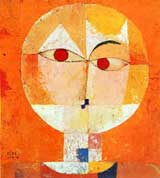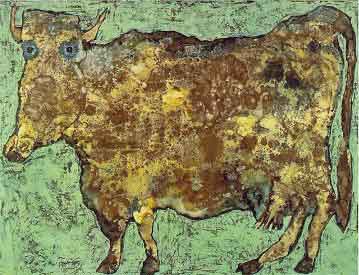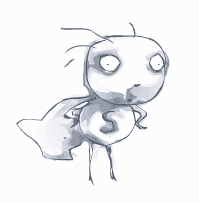
About a year ago I was in a doctor's office and was looking at an immense reproduction of this Paul Klee painting called Insula Dulcamara. I meet a woman and we pleasantly chatted about the painting. She told me how her son and she would discuss what all the little objects in the painting were, birds and fish and whatever. I had just read an explaination that gave another set of interpretations that didn't seem quite as adequate. It made me begin to think about how I felt about the painting rather than what I thought it represented.



 The painting above is not entitled. It's given as an example of Children's Art showing the simplified shapes such as the sun. it can be found at the
The painting above is not entitled. It's given as an example of Children's Art showing the simplified shapes such as the sun. it can be found at the 